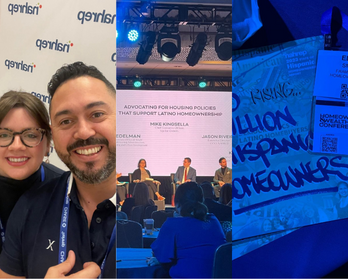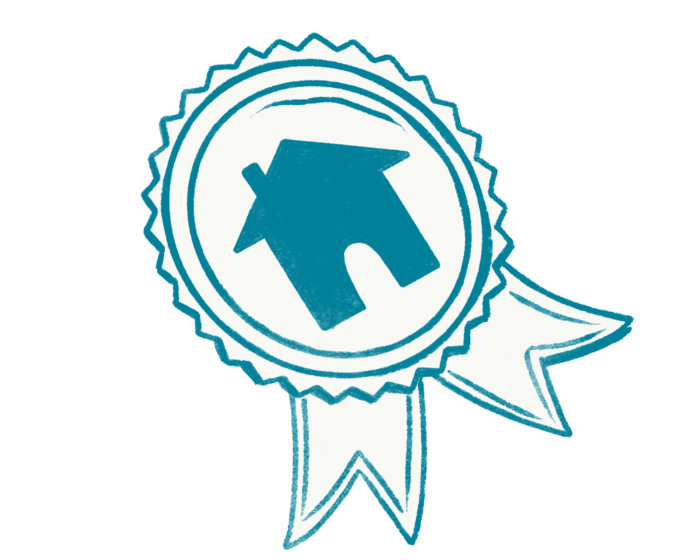Mortgage insurance is an insurance policy required for some borrowers that financially protects your lender if you miss a monthly payment (or several).
We wish we could tell you that’s all there is to know about it … but like so many other parts of homeownership, it’s not quite that simple.
Conventional loans require private mortgage insurance (PMI) if you’re borrowing more than 80% of the price you pay for the home.
Government-insured loans, however, like those offered through the Federal Housing Administration (FHA), require mortgage insurance on all loans. Mortgage insurance for FHA loans is usually referred to as “MIP,” for mortgage insurance premium.
Another key difference between conventional loans and government-insured loans is that conventional loans let you cancel your mortgage insurance once the amount you owe on your mortgage is less than 80% of your home’s value. (Freedom!) FHA loans, on the other hand, typically require mortgage insurance for the entirety of a loan.
Is that all? Well, not exactly. There are other aspects to cover, too, including how much it costs and payment options — but don’t worry, we make it easy to understand:
How much does PMI cost for conventional loans?
This insurance generally costs a few thousand dollars per year, broken down into monthly payments that are added to your mortgage. The exact amount will depend on the size of your down payment, your credit score, and the size of your loan.
Some loan programs offer reduced premiums, but in general, PMI costs 0.3% to 1.15% of the original loan amount, per year.
So, let’s say you’re buying a $200,000 home. If your down payment is $10,000 (5%), then you’ll need to borrow $190,000 in your mortgage. If your PMI is 1%, it’ll cost you $1,900 per year. Divided by 12, that comes to $158 per month.
How much does MIP cost for FHA loans
Compared to conventional loans, mortgage insurance for FHA loans is a bit more complicated.
It’s typically more expensive, first of all, and it’s also less flexible.
FHA loans require both a one-time upfront premium payment and an annual premium divided into 12 monthly payments. The upfront premium can be paid out of pocket as part of your closing costs. It can be lumped in with your loan instead, but then you’ll pay interest on it as part of the total loan amount.
The annual premium is divided into 12 monthly installments to be paid with your monthly mortgage payments.
For an FHA loan, the upfront MIP is 1.75% of your loan amount and the annual premium is between .45% and 1.05% of your loan amount.
How much will my mortgage insurance cost?
While you’re in the homebuying process, your mortgage insurance will be noted on two pieces of paperwork that the lender is legally required to give you:
- All lenders are required to give you a Loan Estimate within three days of receiving your mortgage application, but you can also request one from various lenders that you shop for mortgages from. (This makes the Loan Estimate a helpful tool for comparing loans before you commit to a lender.) The “Projected Payments” section will list the estimated cost of mortgage insurance.
- Your lender must give you a Closing Disclosure at least three days before your scheduled closing date. The “Projected Payments” section is the final summary of your loan terms and costs.
Can my premium go up?
Nope! Once you’ve finalized your mortgage, what you pay for PMI and MIP will not increase.
Can I pay for my mortgage insurance all at once upfront?
For some conventional loans, yes, but you’ll need to be able to afford that. Some lenders also offer “lender-paid” PMI. With lender-paid PMI, you’ll pay a slightly higher interest rate but have no additional monthly PMI costs.
I’ve heard of lender-paid mortgage insurance — is that a real thing?
There are some cases where the lender will cover the cost of mortgage insurance (known as lender-paid mortgage insurance, or LPMI), but you will generally pay a higher interest rate to cover the cost. It may be as little as an extra .25 percent, but that won’t necessarily be less than what mortgage insurance would cost if you paid it yourself.
Not sure if it’s the right choice? Below are some aspects of LPMI to consider.
On the plus side:
- Mortgage interest is generally tax-deductible, but you can currently only write off private mortgage insurance (PMI) on conventional loans if you itemize deductions. There may be further limitations based on your gross adjusted income.
- LPMI on a conventional loan can be less expensive than a mortgage insurance premium (MIP), which is required for most government-backed loans, such as those through the Federal Housing Authority (FHA).
However:
- That higher interest rate you’re paying instead of PMI will last for the entire life of the loan, and you can’t reduce it without refinancing. PMI, on the other hand, can go away once you reach 20% equity in your home.
Is it possible to avoid mortgage insurance?
There are some loan programs that allow less than 20% for a down payment without mortgage insurance. Here are a few:
- Some credit unions waive PMI for applicants with strong financial credentials.
- Veterans can qualify for US Department of Veterans Affairs loans that require no down payment or PMI.
- Are you a doctor? Certain “physician’s loans” come with no PMI.
- Some banks offer low down payment loans without PMI for low- and moderate-income homebuyers
Keep in mind that these programs come with a catch: You may not need to pay mortgage insurance, but you may be required to pay extra fees or a higher interest rate.
When it comes to PMI, and any other part of the mortgage application process, pay attention to the trade-offs to see if they work in your favor.
For more help with finances in buying a home, check out these posts:
- What is escrow and why are people always talking about it?
- What happens if someone else wants to buy the same house? Tips to win a bidding war.




